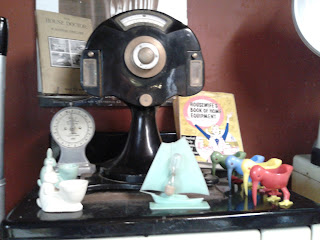This book, subtitled An Intimate History of Collectors and Collecting, is the most thorough and gently intellectually interesting book I have found on the subject. It goes deep into the history of collecting, but rather than simply offering an overview it is also, as the subtitle suggests, a deeply intimate and personal book.
Starting with Blom's own memories of his great-grandfather's collection, the book takes us on an oscillating journey from the early days of cabinets of curiosities, through to the foundation of early museums, to libararies, kitsch, the democratisation of collecting, psychoanalysis... But what I really loved was how rather than just the stories of objects, this book felt like an exploration more of the unknown stories behind such things. The memories objects trigger, the passion that drives the collecting instinct and how this can take over a life but also lead to great discoveries. How collecting has become intricately linked to the formation of knowledge and society as we know it today.
Part One starts with the 16th explosion of science in Italy and how this fueled people to collect specimens of the natural world. How collections became a way of exploring and representing the world - of seeking out new meaning and also of continuing the great works of Pliny and Aristotle. He talks of how the exploration of the wider world fueled this further, with wonderful stories of how sailors would bring back exotic objects from their travels knowing that someone might want to buy them. Both a personal and a world wide exploration seemed to occur. This happened particularly in the Netherlands, where by the 17th century even dolls houses had their own miniature cabinets of curiosities!
He goes on to talk about Philip II and Rudolf II and how these vast royal collections led to the existence of the Wunderkammer or "Chamber of Miracles". The sheer glorious decadence of these collections is almost unbelievable. There was no sterility like some associate with modern museums - these were places of magic. It was like these collections became their own world - an almost metaphysical manifesto to show the world in microcosm. It was almost a practical alchemy where collecting goes beyond object appreciation to an extraordinary quest for meaning. He also talks about how this links in with early botanical collections. These early collections seemed to then expand to contain any number of "foreign rarities" from plants, to beasts, to shoes from Russia, to relics and oddities like pictures made from feathers. There is a sense that these collectors are pioneers trying to own a little of the whole world - that they are travelling whilst staying still. He ends part one talking about the creepy world of anatomical collections such as that of Dr Ruysch who preserved human specimens - he had a skeletal garden of Eden and a child's hand which he surrounded by exquisite lace. I was fascinated by how what is now seen as a personal hobby was once at the forefront of scientific discovery.
There are so many names and collections discussed and explored that they are far too numerous to go into here, and far too interesting to simply list. But Blom does then go on to talk about how the Enlightenment changed collecting and how more scientific labelling and catagorising emerged. How this led to the foundation of museums as we know them today. But he also explores crazy personal ways of displaying collections such as vast painted landscape backdrops and life size dioramas. He explores how the French Revolution changed collecting and showed it as national ambition and acquisition. How in the 19th century the role of museum as educator really began to evolve. He gives both a very interesting history of relic collecting and of how book collecting can differ from other sorts in that books already contain stories - they have a voice that travels through time and lives. He also talks very interestingly about Camillo and Bacon and Theatres of Memory - the trend for allegorical imaginary museums. An idea I would love to explore more.
In the 20th century he explores mass production and the democratisation of collecting, and the emergence of the idea of having a complete set as opposed to collections being omniverous and open-ended. He talks to a man who collects everyday objects as a social history of modern society - collecting as a salvage operation - collecting as building an ideal world - of showing the character of the world. How collecting faulty objects can reflect the flaws in society.
I could go on but, as this review is probably showing, it seems futile to really explain the depths of this book in such a short space. I feel a little like I am too a collector trying to catalogue a cabinet of wonders but that it is losing its magic as I write down sterile worlds. I made pages of notes when reading as there were so many wonders that I didn't want to forget - my brain becoming its own depository for object facts - but now like a swamped curator I hardly know how to put them all together. Suffice to say that if you want to read a meaningful and fascinating in depth history of collecting, then this is the book for you. Having read it once I know that it is a book that I will revisit throughout my life, and that has given me a wealth of things to think about in terms of museeme and the meaning behind my own collecting instincts. It can be brought here






























